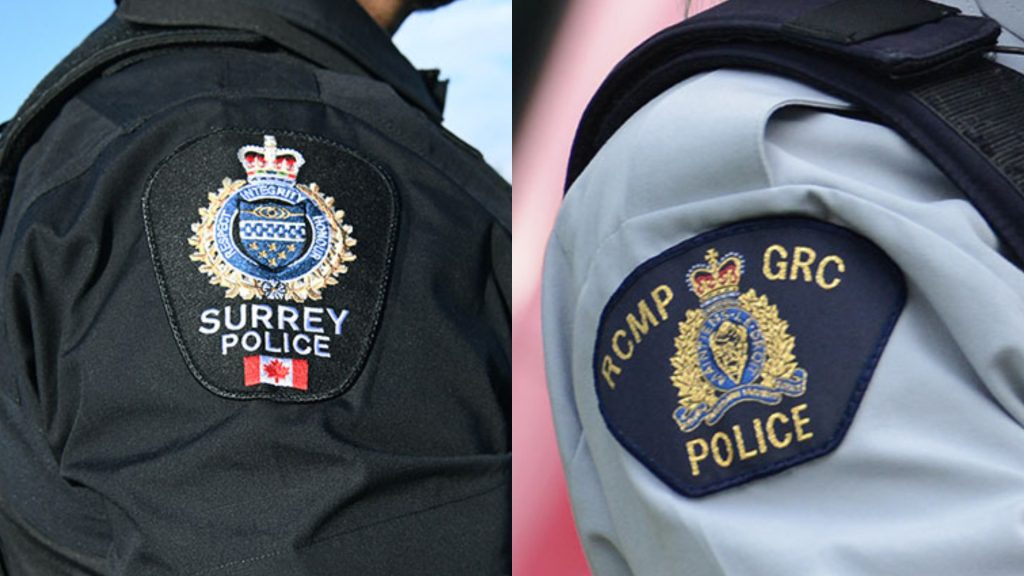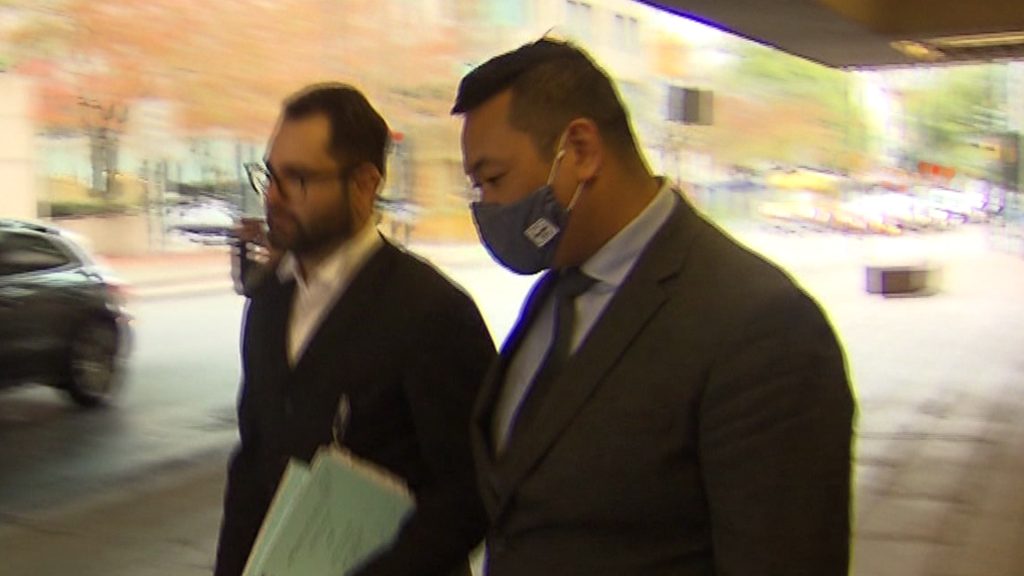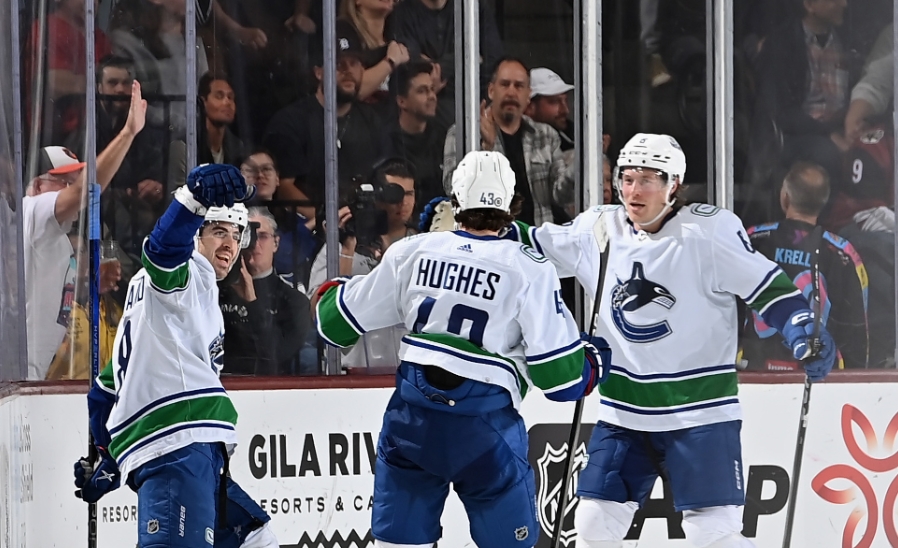‘Why?’ – And other questions for the guy who ran 176 km through Chilliwack’s mountains
Posted December 30, 2020 10:31 am.
Last Updated December 31, 2020 8:28 am.
CHILLIWACK (NEWS 1130) – Gary Robbins ran some 50 kilometres through the night from Cultus Lake to Chilliwack Lake before vomiting the contents of his stomach on the trail side.
Then came the hard part.
The veteran ultramarathoner then ran another 120 kilometres up and down four mountain passes, gaining nearly 9,000 metres of elevation in total. The entire run took more than 37 hours.
Robbins, who has completed more than 20 100-mile runs over the last 15 years, said he felt compelled to do something special this year when the COVID-19 pandemic cancelled many of the runs he planned to participate in or lead as a race director.
So he followed the advice of public health officials by staying close to his new home in Chilliwack and began scouting the route for a run he would come to call the Big Chill.
He completed the run in August and released a 46-minute documentary chronicling the effort this month.
This interview has been edited for clarity and length.
NEWS 1130: Why?
Gary Robbins: I find great motivation, inspiration in being out in the mountains for long efforts and running for long distances has always really spoken to me as a nice way to get away from it all.
You’re about 50 kilometres in, you’re just starting to hit your first big uphill and you start to puke all your guts out. What’s going through your mind? Are you thinking about quitting at that point?
[Ultramarathons have been] my life for the last 15 years. So seeing someone lose their stomach is not an abnormal thing, unfortunately. And the reality is it’s because you’re trying to digest calories on the run continually, which isn’t always the easiest thing to do.
I typically don’t get sick and have stomach issues, so it was not something I had foreseen or planned for. It definitely was something I had to overcome in the moment, but I knew it wasn’t anything greater than just struggling to digest the calories as I was going.
I thought about quitting a little bit because you’re kind of miserable at that point in time, but I also knew from experience that if I just kept a positive attitude and kept myself moving, that I would rally through that. You get that low point and manage to find a high point not that far away from it again.
Is there something in particular you think about in that moment to motivate yourself?
Honestly, in those moments, I kind of tell myself to not stop, to not give into it, to not overthink things, to try to externalize thoughts as much as possible, try to draw inspiration from the landscape, if you can. And to really not overthink things and not make it out to be a bigger issue than it actually is. So it’s really about distracting yourself until you start to feel better again knowing that you will definitely start to feel better again if you can just keep yourself moving.
View this post on Instagram
In addition to trying to complete this giant trek, you’re also filming as you go. Does that add an extra challenge? Does it help you motivate yourself, that you have to complete this film and show it off to people at a later date?
Yeah, it definitely changes the dynamic. I had a very good friend, a professional filmmaker by the name of Jeff Pelletier who produced the film.
We’re collecting most of that footage on the run itself, which made it fairly unique in the space that I exist in. A lot of documentaries for this are normally recreated after the fact, but we were doing it on the fly, as we were going. So certainly it does change the dynamic a bit. There was some stopping and going as we were collecting the necessary footage, but in the end it worked out. We got a bit more of a dramatic piece than we anticipated, with some of the issues that I unexpectedly ended up coming up against.
As you’re going, you’re not alone. You have friends that do different legs with you. What do they do for you? And how do they help you along?
I had a group of friends that were part of the experience. You intercept points along the way where you would get additional food and water supplies. We would call that an aide station, where friends are able to drive in and set up a transition point to stop and refuel.
When someone goes with you, we call that a pacer. And why I had pacers with me the whole time. Firstly, a safety reason: I’m on quite exposed backcountry terrain for a lot of this and you want to make sure you are doing it as safely as possible. In the documentary you can see in particular a few of my pacers are carrying a larger backpack and they’re not carrying supplies that I would utilize, but they’re carrying our emergency supplies just to be safe with everything while we’re out there, to have a second set of eyes while going through the night because I am going nonstop for a day and a half, just to ensure that we’re taking all the necessary precautions to be as prepared as possible to safely be able to pursue something like this.
When you’re out in the middle of nowhere, what would have happened if you had gotten hurt. If you rolled your ankle or, God-forbid, broken your leg?
We had a very detailed plan going into this. We had all of our access points identified. We had multiple 4X4 vehicles that we were communicating with throughout. And we had access to shelter if need be. We were never too far removed from a pacer, a friend being able to provide the necessary supplies for us to be able to hunker down for the night if we did have any major issue, which would be very unlikely but we certainly were prepared for any of those scenarios.
I imagine you wouldn’t recommend the average person just runs out into the woods and tries to cover 100 miles without doing all those other things first in preparation.
Yeah, absolutely. I’ve been doing this for 15 years, I’ve had lots of experience with the distance. Most importantly, I had scouted and done all of the terrain in advance. I was very familiar with what we were going up against.
I started on a Friday night at 10 o’clock so that I ran through the night to be begin, so that I was covering the more technical section, the alpine areas, what I would call the crux of the route, the most difficult passes, during daylight.
View this post on Instagram
At the end of the film, you say you think Chilliwack could be the next Squamish. Why do you feel that way? And why you want to promote Chilliwack?
I’ve been living on the coast for two and half decades and I’ve lived in Whistler, Pemberton, Squamish, North Vancouver and then we relocated out to Chilliwack just over a year and a half ago.
What I see here is incredible mountain access. Really diverse trail networks and something that is very exceptional, but a little lesser-known in the Lower Mainland. The great attractant for us was just the cost of living, being a little bit cheaper than anywhere else. So I do think that Chilliwack is going to see its day in the sun, if you will, and having lived in Whistler and Squamish 25 years ago, and seeing the development that’s happened through there and the way that Squamish, in particular, really came into its own, I feel a lot of what Chilliwack is and what Squamish was, and where that will eventually lead.
I think long-term locals have known for a while how great it is out here, and were probably keeping it on the hush. I’m sure there’s more than a few people that are hoping it still stays a little bit quiet.
At the end of your run, you do this big cannonball into Cultus Lake and you’re with your family. What happened after that? Did you just go home and sleep 15 hours?
My son is five years old, so he jumped in afterwards and we played for a little bit. Having just run for pretty much 37 and a half hours continuously … I fell asleep in the sun for about an hour. Eventually my wife and friends kind of picked me up, packed me in a car and then I came back to our place here and slept for about 12 hours after that.
Most people are never going to do a run as long as that, or even a tenth as long. But it is New Year’s and a lot of people are making their resolutions. Maybe their equivalent of the Big Chill is completing a 5K. So what advice would you have for someone who’s just trying to hit that new goal?
Going into the new year right now, it’s a good time to lay out those goals. I would say, first and foremost, make something realistic and then write things down. It makes a big difference to actually write things down. Pen or pencil on paper and come up with a plan with how you can initiate that action and follow through on it.
This is my life, my livelihood, but running is not always easy. It might look easy in a film or something, but I have just as many days as anybody else with not feeling super motivated. So I got a rule that I enforce, a 20 minute rule: get out the door, no matter how I’m feeling, and get 20 minutes in and see how I’m feeling at that point in time. Typically, by the time 20 minutes elapse, I feel pretty good about being outside and I continue on with my run.
I often find the hardest part is actually getting on your kit and stepping through the front door and everything after that gets just a little bit easier.










